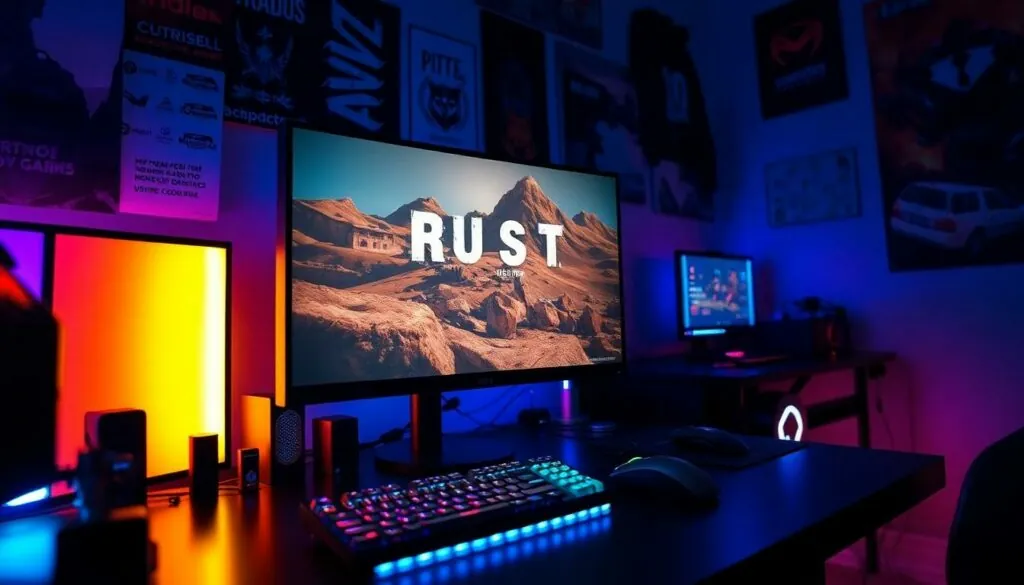Table of Contents
ToggleWhen diving into the world of gaming, one question often pops up: just how many gigabytes does Rust take up? Picture this: you’re ready to build your empire, but your hard drive is playing hard to get. Knowing the game’s size can save you from the dreaded “insufficient storage” message that feels like a slap in the face right before a raid.
Overview Of Rust
Rust, the multiplayer survival game, has a notable size that varies based on several factors. Primarily, the game’s storage requirement can range from 20 GB to 30 GB. Developers frequently release updates and patches, influencing game size. Players should consider this storage when planning installations on their devices.
Game expansion packs may also add extra space requirements. Every update introduces new elements that enhance gameplay. This means players must keep an eye on their available storage. Insufficient storage often leads to frustrating installation failures.
Rust emphasizes detailed graphics and expansive worlds, which contribute to larger file sizes. Visual fidelity and dynamic environments demand advanced system resources. Players benefit from understanding these requirements to optimize their gaming experience.
Operating system differences can further impact the storage footprint of the game. For instance, installation on Windows may differ in size from other platforms such as macOS or consoles. As a result, players should verify the specific requirements for their chosen device.
Players experiencing storage issues may need to consider uninstalling outdated games or software. Regularly clearing unused files can help maintain sufficient storage for Rust. Game management tools can also assist in monitoring available space. By following these tips, players can ensure smooth gameplay and enjoy all the features Rust has to offer.
System Requirements For Rust
Understanding system requirements ensures a smooth gaming experience with Rust. The minimum and recommended requirements are essential for optimal gameplay.
Minimum Requirements
Rust requires a baseline level of hardware to run effectively. Players need a 64-bit operating system, such as Windows 7/8/10. A minimum of 8 GB RAM supports gameplay, while a processor like Intel Core i7-3770 or AMD FX-9590 provides necessary performance. For graphics, a GPU such as Nvidia GeForce 670 or AMD Radeon 7870 is essential, along with DirectX 11. The game also demands at least 20 GB of available storage space.
Recommended Requirements
The recommended system requirements enhance Rust’s performance and visual quality. Players are encouraged to use a 64-bit operating system, ideally Windows 10. A minimum of 16 GB RAM supports smoother gameplay, while processors like Intel Core i7-4690 or AMD Ryzen 5 1600 provide advanced capabilities. Graphics performance can improve with GPUs such as Nvidia GeForce 880 or AMD Radeon R9 290. DirectX 11 remains necessary, and ensuring 30 GB of available storage space allows room for updates and expansions.
Installation Process
Installing Rust requires attention to detail regarding download size and installation steps. Following proper guidelines ensures a smooth experience.
Download Size
The download size for Rust typically ranges between 20 GB and 30 GB. This variation stems from regular updates and additional content, which expand the game’s file footprint. Players should regularly check for updates, as these can increase the required storage space. Keeping at least 30 GB of free storage helps accommodate these changes without interruption.
Installation Steps
To install Rust, players begin by purchasing the game through a digital platform like Steam. After purchase, they select the game from their library and click the install button. Players should ensure their system meets minimum requirements before proceeding. Once installation starts, it typically auto-downloads the latest updates. Players should monitor the installation progress and wait for completion before launching the game for the first time.
Gameplay Experience
Rust offers an immersive gameplay experience defined by its high-quality graphics and expansive worlds. Players enjoy dynamic environments that change based on weather and player interactions, enhancing realism and engagement.
Graphics Settings
Graphics settings in Rust allow players significant control over their visual experience. Options range from ultra to low presets, catering to various system capabilities. Adjusting settings like texture quality, shadows, and effects can minimize lag. For instance, lowering the shadow quality can improve performance on lower-end systems. Additionally, customizing resolution settings helps balance quality and performance.
Performance Impact
Performance impact in Rust depends heavily on hardware specifications and graphics settings. Players with minimum requirements may encounter frame rate drops during intense gameplay. Those meeting or exceeding recommended requirements enjoy smooth gameplay even in high-stress situations. System resources can quickly become strained with extensive updates, especially if lacking sufficient storage. Monitoring background processes also helps enhance performance, ensuring a smoother gameplay experience.
Conclusion
Understanding the storage requirements for Rust is crucial for an uninterrupted gaming experience. With its size ranging from 20 GB to 30 GB and frequent updates, players must ensure they have adequate storage before diving into gameplay. This proactive approach helps avoid the frustration of installation issues and allows players to fully enjoy the immersive world Rust offers. By managing storage effectively and keeping system requirements in check, gamers can enhance their performance and enjoy the dynamic environments that make Rust a standout in the multiplayer survival genre.


